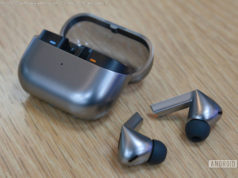Though trailing behind Waymo, Uber has one of the most promising self-driving car programs on the road to date.
Uber By The Numbers
200: the number of minivans in Uber’s current automated fleet
24,000: the number of SUVs recently purchased from Volvo
1 million+: the number of miles driven on public roads
4: the number of cities where Uber automated cars are being tested
Uber started out as a service that was as appealing to potential drivers as it was to urban passengers weary of cabs: with your own car and some spare time, you could make some cash by ferrying folks to where they needed to go. Lately, though, Uber has set its sights on replacing human drivers through its self-driving car program.
Few other firms have embraced this initiative with as much zeal and resources, and the San Francisco-based company had self-driving cars on public streets well before some of its most prominent competitors.
[Update: An Uber self-driving car struck a pedestrian walking outside of a crosswalk in Tempe, Arizona on March 18,2018. The pedestrian was taken to a local hospital, where she died from her injuries. The car was in autonomous mode at the time, and though there was a human operator behind the while, they were not in control of the vehicle.]
Uber has suspended its self-driving tests in Tempe, San Francisco, Pittsburgh and Toronto following the accident. The company expressed condolences to the victim’s family, and noted it is working with authorities to investigate the incident. The National Transportation Safety Board is also investigating what led to the fatal accident. This is the first known pedestrian death involving a self-driving vehicle.]
Below, we’ve compiled everything you need to know about Uber’s self-driving car initiative. How did it all start?
Following months of rumors and vocal support for automation on Uber’s part, Uber first announced its intentions to amass a fleet of automatic cars in February 2015, which happened to be the same week that Google announced its own interest in autonomous car technology. (Pay attention, kiddos, for this is important later on.) Shortly after, Arizona Governor Doug Ducey invited Uber to test its cars in the state.
Initially, though, the project kicked off in Pittsburgh, Pennsylvania, where Uber had hired a bunch of researchers from Carnegie Mellon University and helped revitalize Pittsburgh’s Strip district with the opening of the company’s Advanced Technologies Center .
Uber’s initial fleet included 20 Ford Fusions, which seemed like a whole armada back when autonomous cars still felt like science fiction.
One of the early Ford Fusions
The cars themselves were packed with around 20 cameras, seven lasers, a GPS, radar and lidar, a technology that measures the distance reached by outgoing lasers so cars can “see” and interpret the action around them.
Uber quickly began showing off its cars to reporters on trips throughout Pittsburgh, but in every case the car had a „safety driver“ that would grab the wheel if things got rough. Tests and accidents
Following the first experiments with the Ford Fusions, the Volvo XC90 became the vehicle of choice for automation in Uber’s first rides on the streets of Pittsburgh.
Initially Pittsburgh mayor Bill Peduto welcomed Uber and its 100 Volvos with open arms, claiming that it was necessary to roll out the red carpet rather than red tape for Pittsburgh to „be a 21st-century laboratory for technology.“
Uber took advantage of the relative freedom to dive into testing in Pittsburgh at full strength, even to the point of building a fake city called Almono outside town to test cars before unleashing them in the Steel City. Even so, the early months were full of light collisions and traffic violations.
The relationship between Pittsburgh and Uber soured quickly. As The New York Times reports, Peduto didn’t get any written agreement from Uber, which came back to haunt him and the city.
Uber started charging fees for autonomous car rides, even though Peduto was under the impression that the rides would be free, and the company withdrew support for a $50 million grant meant to revitalize Pittsburgh’s local transportation.
For that matter, Uber’s presence didn’t create jobs on the level that Peduto had apparently expected. The relationship has improved as of late, but it’s still rough.
Uber also started testing 16 automated cars in its hometown of San Francisco in December 2016, but as Ars Technica reports, the California Department of Motor Vehicles quickly revoked the registration for the vehicles because Uber refused to secure a special permit that would register them as test vehicles. (Uber’s automated tests eventually returned to San Francisco in May 2017.)
Undaunted, the same month Uber started tests in the neighboring state of Arizona, on the streets of Tempe.
In March 2017, one of Uber’s automated car was in a crash in Tempe, although blame fell on the human driver of another car for not yielding the right of way. Uber briefly suspended its fleet in order to investigate. A later crash happened in September, but, again, human error was involved.
In late 2017, Uber extended its tests to Canada, and set two automated cars on the streets of Toronto.
In March 2018, an Uber self-driving car in Tempe, Arizona struck a pedestrian who was walking outside of a crosswalk. The pedestrian was taken to a hospital, where she died from her injuries. The car was in autonomous mode at the time of the accident, and though there was a human operator in the driver’s seat, they were not in control of the vehicle when the accident occurred.
As a result of the fatal accident, Uber has suspend its public self-driving tests in Tempe as well as in San Francisco, Pittsburgh and Toronto. The company is working with local authorities to investigate what happened, and the US National Transportation Safety Board is also investigating the incident.
This is the first fatality involving a self-driving vehicle with the AI in control. The investigation is ongoing, and we’ll update this page with more information as it comes to light. Uber vs Waymo lawsuit
To hear it from Waymo, Uber’s announcement of an automated car program at the same time as itself was hardly a simple coincidence.
Waymo (the self-driving car company created after Google’s restructuring into Alphabet) asserts that former Google employee Anthony Levandowski downloaded around 14,000 files of proprietary data relating to autonomous cars before leaving the company to found Otto, an autonomous truck company. Uber later bought Otto in 2016 for $700 million, and Levandowski took the helm of Uber’s self-driving car efforts.
The trouble began when one of Uber’s parts suppliers accidentally copied Google on an email with information about Uber’s lidar circuit board, which Google said looked almost exactly like its own.






